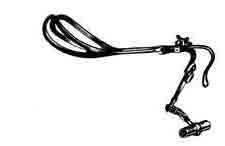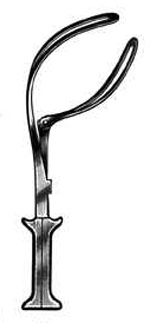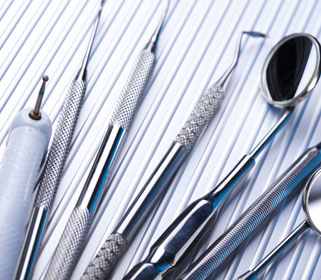Home » Surgical Instruments, Medical Surgical Supplies & Equipment » Obstetrical Forceps » Obstetrical Forceps
Obstetrical Forceps

De Wey Obstetrical Forceps, Axis Traction, 14in
Retail Price: $1,735.36
Your Price: $1,360.14
 Unit: single
Unit: single

Barton Obstetrical Forceps, 14in, One Hinged Blade
Retail Price: $1,735.36
Your Price: $1,360.14
 Unit: single
Unit: single

14in Simpson-Luikart Obstetrical Forceps
Retail Price: $832.91
Your Price: $652.82
 Unit: single
Unit: single
When a mother delivers a child, she expects her doctor or midwife to use the most efficient tools necessary to successfully and quickly deliver her child safely. It is for this reason Medical Supplies & Equipment Company suggests the use of obstetrical forceps when applicable, to smooth over the difficulties of labor. A tool such as the forceps, which have had a colorful journey through history, is precisely what obstetrician/gynecologist, or OB/GYNs, and midwives rely on for childbirth procedures when the proper birthing conditions allow. Overwhelmingly, the use of forceps is indicated when rapid delivery is necessary in an emergency. Because they’re fairly safe and gentle when used properly, they greatly shorten the end of exhausting labors.
The use of obstetrical forceps has been practices since their “discovery” in 1831, when a woman found the forceps in a trunk along with evidence of their use by Peter Chamberlen, who died in 1631 in England. It is known that Chamberlen was the first to use the technique implementing the forceps that we still see today. Although at the time the use of such an instrument was kept secret by the Chamberlen family, it is said that the use of obstetrical forceps was used on a number of royal births, and that the technique contributed to the success of the known difficult births.
Today, doctors, OB/GYNs and midwives benefit from the use of obstetrical forceps because the tool aids in vaginal delivery of the baby, because of their unique design. Equipped with two blades and a handle, forceps are now used to ease a delivery or because of problems with fetal distress or fetal position in cases where C-section is not necessary or is too risky. The forceps are designed to grasp the fetal head when it is in the vagina and facilitate delivery by the use of traction and guidance without causing injury to the mother or baby.
Obstetrical Forceps consist of two moveable arms, or blades, and the blades have two curves; the cephalic curve provides a good application to the fetal head, and the pelvic curve allows the blades to fit in with the curve of the birth canal. There are two locking mechanisms which prevent the baby’s skull from being crushed by forceps, the English lock and the French lock.
Some Obstetrical Forceps have detachable handles, rods or tapes which allow traction in the pelvic axis. If used incorrectly, they can cause serious harm. But, when used correctly, they actually provide a gentler delivery for a baby's head than no forceps at all. This is because proper forceps placement provides a halo of metal which surrounds the baby's skull, protecting it. All of the force is spread over the metal halo and is applied at the cheek bones, so the baby's brain is not subjected to the compression-decompression forces that the vaginal sidewalls exert against it as the head descends.
All of our Obstetrical Forceps are made of the finest stainless steel, for easy cleanups. Our forceps are available in various sizes and with several kinds of locking mechanism. If you’re looking for the finest forceps to use in your practice, you’ll find only the best from Medical Supplies & Equipment Company.
Whatever your requirements, you can find what you are looking for today in our online inventory. If you have any questions or need assistance, call us toll-free at 1-877-706-4480. Our staff is ready to assist you.














